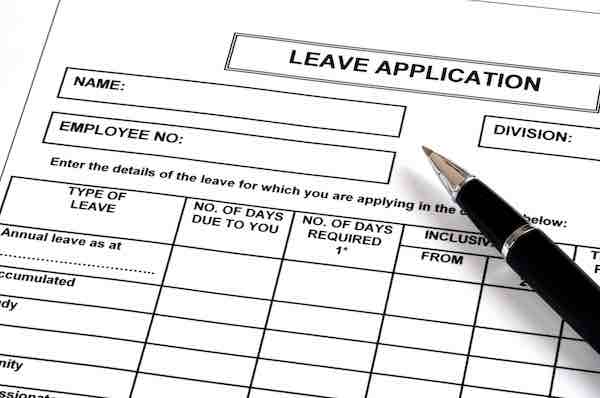Federal employees are now allowed to take leave to seek safety from domestic violence thanks to new guidance from the Office of Personnel Management (OPM).
“Safe leave” as it’s called is designed “to assist Federal employees in need of time off for safe leave purposes with navigating the various leave options and other flexibilities available to them to keep themselves and their family members safe and to recover from incidents of abuse and harassment.”
OPM has issued the new directive in accordance with the Biden administration’s push to expand leave options for federal employees. President Biden issued a 2023 memo calling for expanding leave options for the federal workforce for reasons such as bonding with newborn children or managing family affairs when a family member was called to active duty. The memo also instructed OPM to look for ways to give more leave options to federal employees to seek safety and recover from domestic violence, dating violence, sexual assault, or stalking.
Agencies are being instructed to support federal employees in taking safe leave for the following qualifying purposes:
- Seeking medical treatment, including seeking mental health services such as counseling or therapy
- Securing housing or relocating
- Obtaining services from organizations or groups that provide services for survivors of domestic violence, sexual assault, image-based abuse, human trafficking, and/or stalking
- Participating in safety planning or taking other actions to increase safety
- Attending court to obtain a protective order, participate in child custody proceedings, or obtain legal or other victim services
- Otherwise dealing with the consequences of the abusive behavior (for example, arranging for childcare, enrolling a family member in a new school)
Safe leave can also be used when assisting family members in the same matters. The definition of “family member” covers a wide range of possible relationships which includes “spouse; parents; parents-in-law; children; brothers; sisters; grandparents; grandchildren; step-parents; step-children; foster parents; foster children; guardianship relationships; same sex and opposite sex domestic partners; spouses or domestic partners of the aforementioned, as applicable; and any individual related by blood or affinity whose close association with the employee is the equivalent of a family relationship.”
Domestic abuse arising from technological and economic abuse is also a qualifying condition as outlined in OPM’s fact sheet on safe leave. It can be applied in situations in which abuse is currently taking place or to circumstances in which a past situation involving such violence, abuse, or harassment is currently causing a negative impact in the workplace.
An employee’s credible statement should be sufficient evidence that he or she is dealing with a qualifying circumstance in order for agencies to grant safe leave requests, but OPM said that agencies can request supporting information if needed such as a service provider’s statement, medical records or a doctor’s statement, as well as a protection order or police or court reports.
However, OPM said that agencies should “under no circumstances” require federal employees to contact law enforcement or otherwise report the violence as a condition to get safe leave because that could put them in greater danger.
Leave Options for Safe Leave
Possible leave options include annual leave (including advanced annual leave), sick leave (including advanced sick leave), weather and safety leave, and leave without pay. Agencies can also consider the use of workplace flexibilities such as telework or remote work, as appropriate.
Weather and safety leave can be used if employees are unable to work at an approved location (agency worksites or telework/remote work locations) because of safety risks associated with domestic violence, dating violence, sexual assault, stalking, or other related forms of abuse or
harassment—for example, an active threat of physical violence at the work location. Granting weather and safety leave would depend on the safety risks associated with the given work location.
Weather and safety leave is only an option if federal employees are performing work at an approved alternate location and there is an emergency situation due to safety risks associated with domestic violence, dating violence, sexual assault, stalking, or other related forms of abuse or harassment on a workday the employee is scheduled to work at the approved telework/remote worksite.
The leave would not be available to assist a family member unless there is a threat to the employee’s safety on a workday at the employee’s worksite as a result of assisting a family member.
Other Leave Opportunities Available to Federal Employees
Federal employees also have access to many other leave opportunities such as:
- Two weeks of paid leave for purposes of bereavement in connection with the death of a child
- Up to 12 weeks of paid parental leave for the birth of adoption of a child
- Up to 3 workdays of funeral leave to make arrangements for or to attend the funeral of an immediate relative who died as a result of wounds, disease, or injury incurred while serving as a member of the Armed Forces in a combat zone
- Paid time off without charge to leave to serve as a juror or witness
- Annual and sick leave – federal employees can accrue as much as 1 day of annual leave per pay period and 1/2 a day of sick leave per biweekly pay period depending on their length of service
- 11 paid federal holidays in a typical year
OPM provides detailed information on its website about the various types of leave options available to federal employees and how they work.





